Letters / / 05.12.23
Open letter: sanctioning and banning Russian diamonds by the European Union
Click here to view a pdf of this letter.
Open letter: sanctioning and banning Russian diamonds by the European Union
The letter below was sent by The Sentry to the following recipients:
Ursula von der Leyen, President of the European Commission
Alexander De Croo, Prime Minister of the Kingdom of Belgium
Josep Borrell Fontelles, High Representative of the EU for Foreign Affairs and Security Policy / Vice-President of the European Commission
Valdis Dombrovskis, Vice-President of the European Commission
Paolo Gentiloni, Member of the European Commission
Brussels, 11 May 2023
Dear President, Prime Minister, High Representative / Vice-President, Vice-President, and Commissioner,
Alrosa, a Russian state-owned enterprise and the world’s largest diamond mining company, was sanctioned by the United Kingdom and the United States shortly after Russia’s full-scale invasion of Ukraine in an effort to cut off funding for Putin’s war machine. The US also banned the import of Russian-origin non-industrial diamonds altogether on 26 March 2022, while the UK increased the import tariff on Russian diamonds by 35% on 21 April 2022.
While the EU has banned other products, such as Russian-origin gold, in line with the US and UK, it has neither sanctioned Alrosa nor banned Russian-origin diamonds. The EU did ban the export of diamonds to Russia—except for industrial use—as part of a ban on the export of luxury goods on 15 March 2022.
Sanctioning Alrosa and banning Russian-origin diamonds, both rough and polished, are critical steps for the EU to stem Russia’s financing of its war effort in the short term. Both measures should be imposed as soon as possible.
Earlier this year, details emerged of a so-called “watertight” traceability plan and a G7 ban on Russian diamonds proposed by the Belgium government. We would like to reiterate the statements by Belgium MEP Kathleen Van Brempt that the G7 and EU plan is “not a reason to postpone the inclusion of diamonds in European sanctions.”
Reports are emerging of technological interventions to trace the origin of diamonds through their chemical composition. If pilot testing is successful, the company developing the technology aims to make its product available on the mass market “by the end of 2024.”
Even assuming this new technology can be successfully deployed, the EU risks being used in the meantime to circumvent US and UK restrictions. Already, reports are emerging of diamond-related transactions being shifted from US dollars to euros and rupees, putting the EU’s financial system at great risk of being used for sanctions circumvention.
This highlights, even more, the importance of timely sanctions on Russia’s lucrative diamond sector in protecting the integrity of the EU’s financial system.
Conflict diamonds
To be sure, we welcome actions aimed at increasing the traceability of diamonds used to finance Russia’s aggression and conflict diamonds in general. This should include banning diamonds from Russian-linked mines across Africa, as well as diamonds financing other conflicts.
In 2019, the New York Times reported the involvement of Russian mercenaries in diamond mining in the Central African Republic (CAR). The Wagner Group guarding CAR’s diamonds mines is also active in the Ukrainian conflict, raising further concerns that diamonds from Africa are helping to finance Russian aggression.
Hans Merket at the International Peace Information Service, a member of the Kimberley Process Civil Society Coalition, testified before Belgian Parliament on 12 April 2023. He stated that the Central African diamonds linked to Wagner “will end up in Antwerp at one point or another, considering research indicating that 84% of all rough diamonds will transit through Antwerp. Without a doubt, that will also include some of those diamonds, but the current checks are unfortunately blind to this” (translated from Dutch).
Thus, the signatories to this open letter welcome the initiative to implement a traceability system and to ban polished diamonds, further stemming the financing of Russia’s aggression. Currently, none of the sanctions or product bans extend to Russian diamonds polished in third countries, creating a massive loophole and an opportunity for Russia to continue profiting from this industry.
However, lessons from the past have illustrated that “waterproof” traceability systems take time to devise and are not without difficulties.
Since the Kimberley Process was founded in 2003 by the United Nations to counter conflict diamonds, fake certificates have been discovered in Angola, the Democratic Republic of Congo, Guinea, Ghana, Malaysia, Sierra Leone, and Namibia. Global Witness, an official observer since 2003, left the Kimberley Process in 2011, calling it “an accomplice to diamond laundering – whereby dirty diamonds are mixed in with clean gems.”
It is worrisome, to say the least, that sanctioned Russian individuals and entities have links to countries implicated in past fake certificate schemes like Angola. For example, Alrosa owns 41% of Angolan diamond miner Catoca, which owns the fourth largest diamond mine in the world, with the remaining 59% owned by the Angolan state. If the technical capacity exists to distinguish between Russian-linked Angolan diamonds and other Angolan diamonds, it is not clear at this time.
Implementing any traceability system effectively could take years, during which time diamonds sold in the EU could be used to finance Russian aggression.
Previously, several organisations called for the EU to ban the import of Russian diamonds, with Transparency International publishing a public letter in July 2022. We ask that you finally heed our call by banning the import Russian diamonds and sanctioning Alrosa in the EU.
Yours sincerely,
IMPACT
International Peace Information Service (IPIS)
Kimberley Process Civil Society Coalition
The Sentry
Transparency International EU